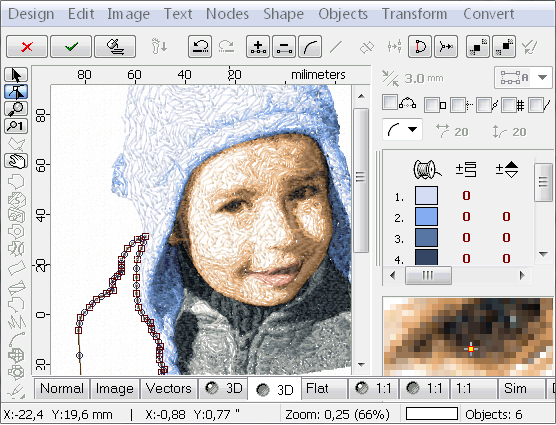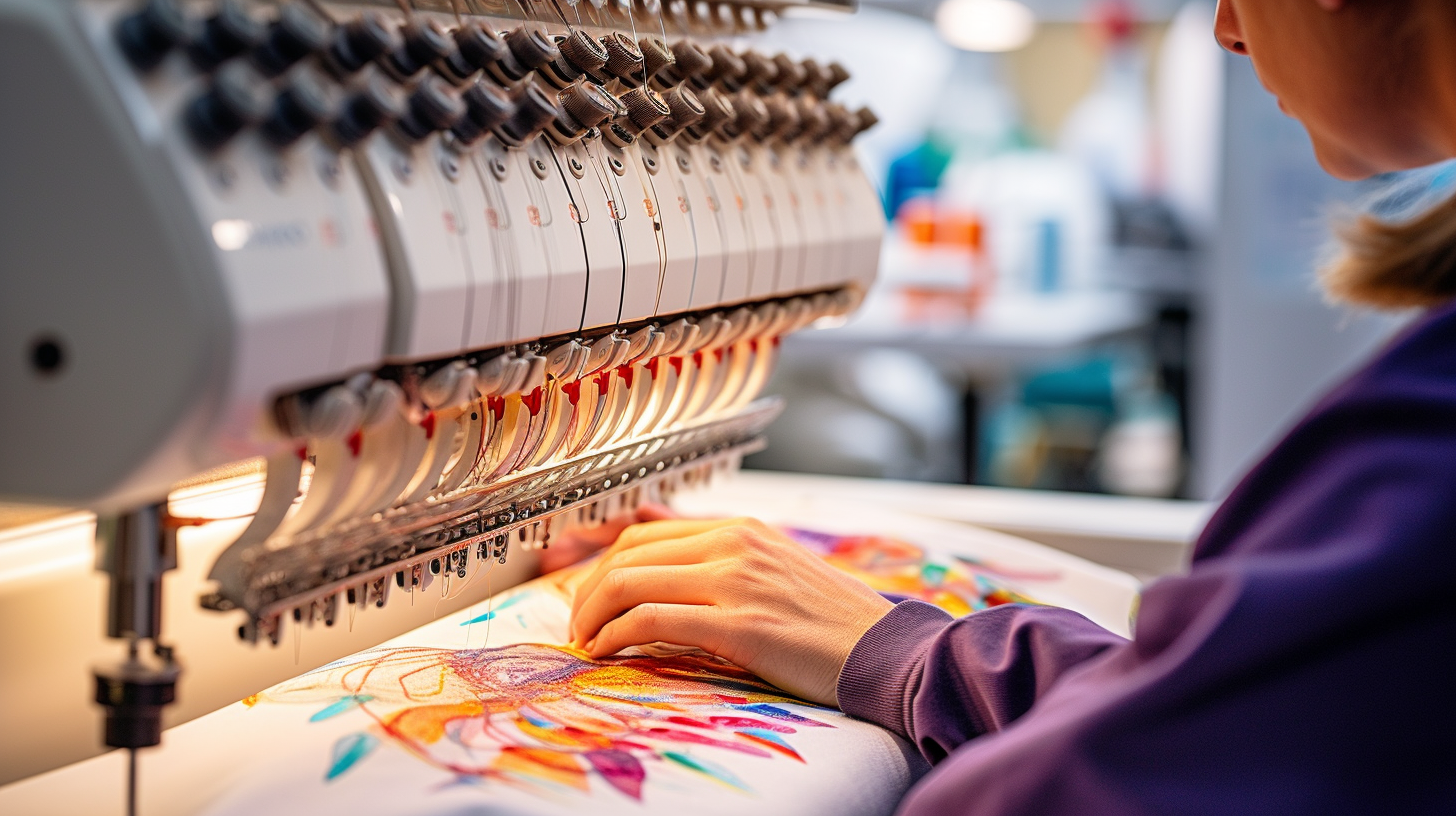Efficient Digitizing for Embroidery: Quick Turnaround
Efficient Digitizing for Embroidery: Quick Turnaround
Blog Article
Mastering the Needlework Digitizing Process: Your Ultimate Overview
Needlework digitizing is a precise craft that calls for precision and know-how to translate complex layouts into digital layouts for machine embroidery. As craftsmens get started on this journey to grasp the needlework digitizing procedure, a comprehensive understanding of the fundamentals establishes the structure for excellence. Past the primary knowledge exists a realm of advanced software, specialized devices, and nuanced techniques waiting to be checked out. By delving into the nuances of digitizing, one can unlock a globe of innovative possibilities and raise their embroidery jobs to new heights.

Recognizing Needlework Digitizing Basics
Embroidery digitizing basics form the foundation upon which complex layouts are translated into machine-readable layouts for exact sewing. This first action in the embroidery digitizing procedure is crucial for ensuring that the final embroidered item is a faithful depiction of the initial layout. Understanding needlework digitizing fundamentals includes comprehending essential concepts such as stitch types, sew instructions, thickness, padding, and draw payment.
Stitch types play a vital duty in establishing the aesthetic and textural result of the embroidered layout. By picking the proper stitch type, whether it be satin, fill, or running stitch, digitizers can attain the wanted effect and boost the total high quality of the embroidery. In addition, sew instructions influences the flow and dimension of the design, while density identifies the spacing and protection of the stitches.
Furthermore, underlay sewing supplies stability to the design by securing the fabric and stopping distortion throughout the embroidery procedure. Draw settlement is another important factor to consider to combat the all-natural propensity of textile to contract when stitched. Understanding these embroidery digitizing basics is basic for producing professional-quality stitched items.
Choosing the Right Digitizing Software
Picking the suitable digitizing software is an essential decision that considerably affects the performance and high quality of the needlework digitizing procedure. Digitizing for Embroidery. When choosing the best digitizing software application, it is necessary to think about aspects such as the intricacy of layouts you plan to create, the user-friendliness of the software, the level of client support used, and the compatibility with your needlework maker
There are numerous digitizing software program alternatives available on the market, ranging from basic programs for beginners to advanced software application for expert digitizers. Some popular choices include Wilcom EmbroideryStudio, Hatch Embroidery Software, and PulseID. These software packages offer a large range of tools and features to help you create intricate styles effortlessly.
Before making a decision, it is advisable to check out the various software options with totally free trials or demonstrations to determine which one ideal fits your demands. Additionally, reviewing evaluations and looking for referrals from seasoned digitizers can give useful understandings into the toughness and weak points of each software (Digitizing for Embroidery). By meticulously examining your demands and comparing the attributes of various digitizing software application, you can make an informed selection that boosts your embroidery digitizing process
Digitizing Tools and Methods

Optimizing Design Setup for Needlework
Understanding the intricacies of layout setups is basic in accomplishing ideal cause the needlework digitizing process, structure upon the foundation laid by comprehending digitizing tools and methods. When optimizing design setups for needlework, it is necessary to take into consideration variables such as stitch type, density, padding, draw settlement, and enrollment. Stitch kind option affects the general look of the layout, with alternatives like satin, fill, and running stitches using different textures and results. Density refers to the spacing and density of stitches, impacting the design's insurance coverage and longevity. Correct rug stitching supplies stability and prevents textile distortion, particularly for complex layouts or on elastic materials. Draw payment readjusts for material stretch during sewing, guaranteeing exact layout duplication. Registration settings you can try here align various elements of the layout precisely, preserving total style integrity. By fine-tuning these style setups, embroiderers can improve the top quality and precision of their stitched developments.

Troubleshooting Common Digitizing Issues
When encountering usual digitizing issues throughout the needlework process, it is vital to understand the origin and execute reliable solutions without delay. One usual issue is stitch thickness issues, where stitches may be as well dense, creating the material to tighten, or as well thin, bring about spaces in the style. Changing the stitch thickness setups in the digitizing software can assist solve this concern.
One more frequent obstacle is string breaks throughout the needlework procedure. This can take place as a result of various reasons such as inaccurate stress setups, plain needles, or using low-quality thread. Guaranteeing appropriate upkeep of the needlework maker, consisting of normal needle changes and stress changes, can decrease the event of string breaks.
Moreover, design enrollment mistakes can lead to misaligned elements within the needlework layout. Checking the layout alignment in the digitizing software program and making required changes prior to sewing can help in avoiding this problem. By dealing with these common digitizing problems promptly and properly, you can make sure a smoother embroidery process and top notch finished items.
Verdict
To conclude, understanding the needlework digitizing process requires a read more strong understanding of the essentials, the ideal option of software, and knowledge of devices and methods. Optimizing layout setups and repairing common digitizing concerns are important steps in making sure top quality needlework results. By adhering to these actions diligently, one can attain accuracy and effectiveness in the digitizing procedure.
Report this page